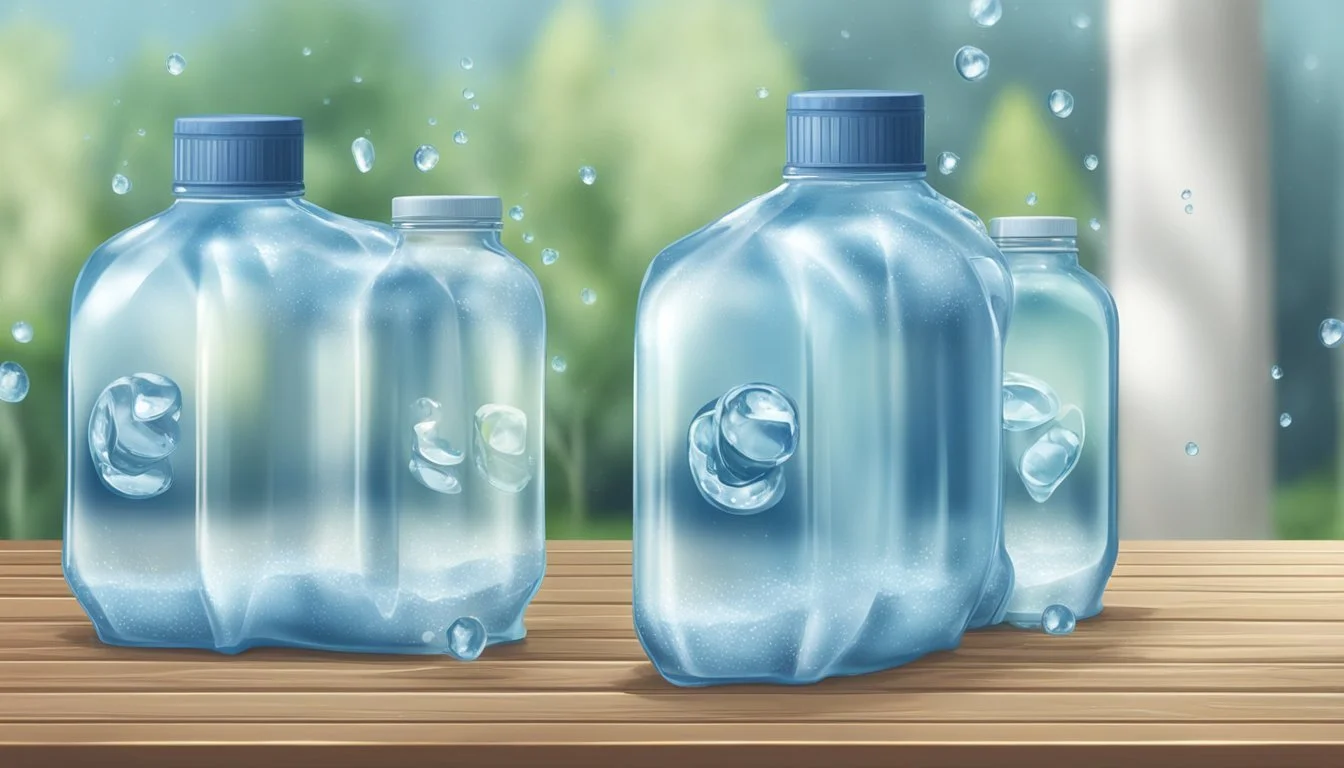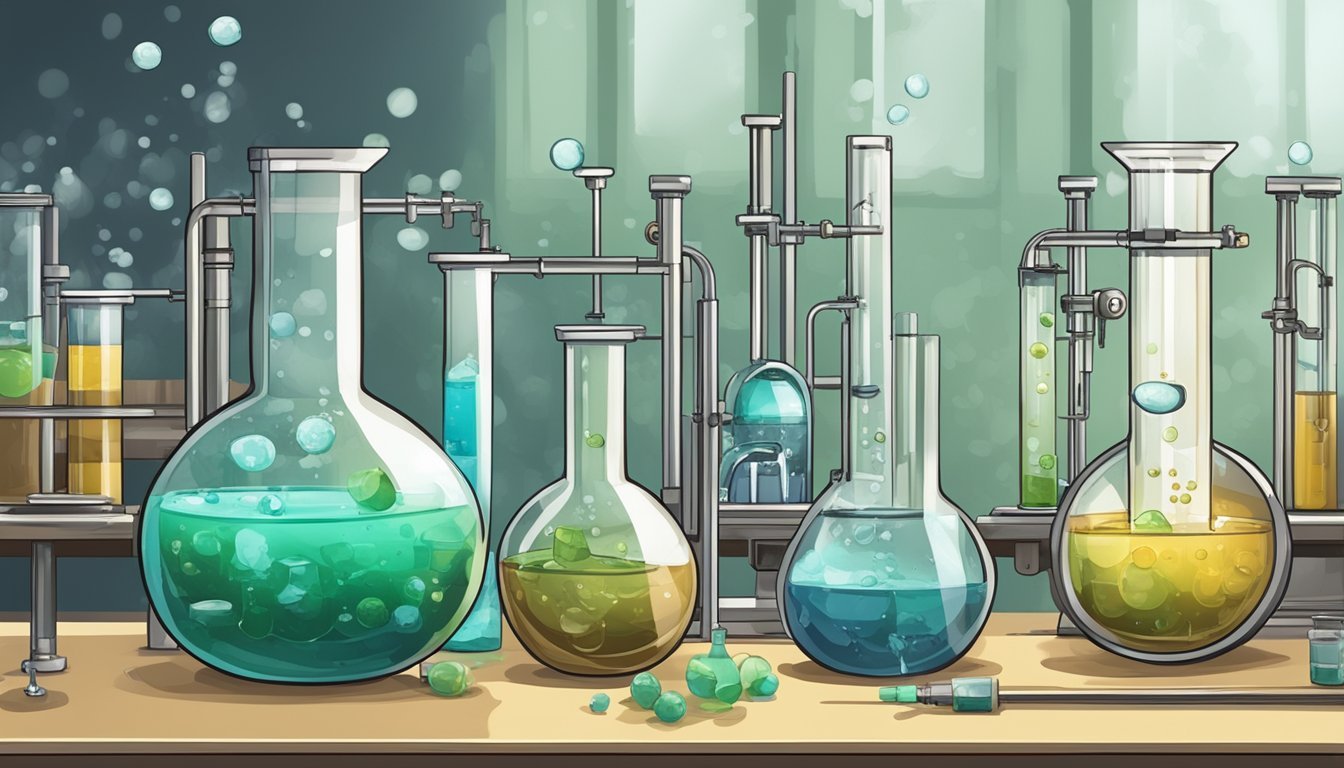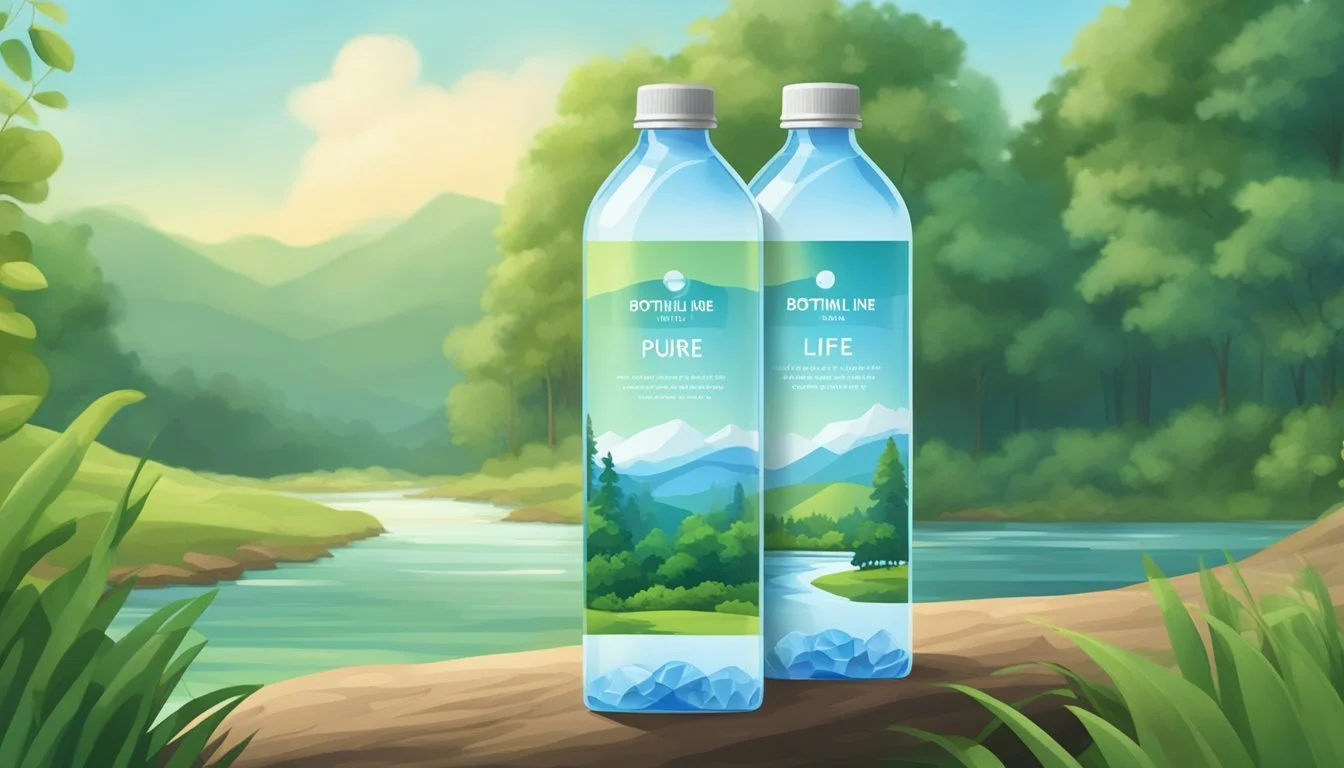Flow vs. Pure Life
Which Bottled Water Reigns Supreme?
When it comes to choosing bottled water, consumers often find themselves comparing popular brands to find the best option. In the case of Flow and Pure Life, the decision ultimately rests on specific criteria such as source, taste, mineral content, and overall health benefits. Flow stands out due to its naturally alkaline, mineral-rich profile sourced from artesian springs, while Pure Life is a widely available purified water brand with consistent quality control.
Flow water boasts a smooth taste and high pH level, making it appealing for those looking for an alkaline hydration option. On the other hand, Pure Life, owned by Nestlé, provides a reliable and affordable choice for everyday hydration. Each brand has its strengths, which cater to different consumer preferences and needs.
Understanding the differences between these two bottled water brands can help consumers make an informed decision. Whether prioritizing natural mineral content or consistent purification techniques, the choice between Flow and Pure Life depends on what each individual values most in their bottled water.
Understanding Bottled Water
Bottled water comes in various types and is subject to different regulations and sources. Each brand employs unique processes to ensure quality, often resulting in distinct tastes and characteristics.
Types of Bottled Water
There are multiple types of bottled water, each with unique properties. Spring water originates from natural springs, wholesome and mineral-rich, such as Evian and Fiji Natural Artesian Water. Mineral water must contain a minimum level of dissolved minerals and electrolytes and be bottled at the source.
Reverse osmosis is a method used by brands like Dasani and Aquafina to purify water by removing impurities. Some bottled waters are filtered to remove contaminants, while others, like Smartwater, are vapor distilled.
Regulatory Standards
Bottled water in the United States is regulated by the Food and Drug Administration (FDA), which sets standards for contaminants. These standards are often more stringent than those for tap water.
Companies must also follow Good Manufacturing Practices (GMP) to ensure cleanliness and safety. Additionally, some brands undergo independent testing for added assurance, including Icelandic Glacial.
Bottled Water Sources
Sources of bottled water are diverse. Natural springs provide water for brands like Evian Natural Spring Water and Fiji Natural Artesian Water. Glacial sources, such as those used by Icelandic Glacial, are another option.
Nestlé Pure Life sources and treats local water, ensuring consistent quality regardless of location. Some companies utilize municipal sources, which are further purified, such as Aquafina and Dasani.
Bottled Water Companies
Several companies dominate the bottled water market. Nestlé produces Pure Life, a widely available and cost-effective option. Evian and Fiji are renowned for their premium spring waters.
Perrier and Voss offer sparkling options, catering to different tastes. Smartwater is known for its vapor distillation process, while lifewtr focuses on pH balance and added electrolytes. Each company offers distinct benefits, catering to varied consumer preferences.
Chemical Composition and Health Implications
Both Flow and Pure Life bottled waters contain various minerals and elements that can impact health differently. Evaluating their mineral content, the presence of potential contaminants, and the pH level is crucial in understanding which option is better.
Mineral Content and Health Benefits
Flow and Pure Life contain essential minerals like calcium, magnesium, and potassium. Flow water, often marketed as artesian or alkaline, typically has higher levels of these beneficial minerals compared to Pure Life.
Mineral Flow Pure Life Calcium 15 mg/L 11 mg/L Magnesium 5 mg/L 4 mg/L Potassium 3 mg/L 2 mg/L
These minerals are essential for bone health, muscle function, and overall well-being. Higher mineral content in Flow could offer more health benefits in terms of daily nutritional intake.
Presence of Contaminants
Consumer Reports highlighted that some bottled waters contain toxic PFAS chemicals, especially carbonated ones. These chemicals can pose significant health risks when consumed over time.
PFAS chemicals, often referred to as "forever chemicals," persist in the environment and human body, potentially leading to health issues. It's important to note if either brand has been tested for these or other contaminants like lead, mercury, arsenic, or endocrine disruptors like BPA.
Testing results indicate:
Flow: Generally has lower contaminant levels.
Pure Life: Occasionally, varying contaminant traces are found, particularly in regions with higher pollution levels.
This makes Flow potentially safer in terms of contaminant exposure.
Acidity and Alkalinity
pH levels determine the acidity or alkalinity of bottled water, impacting taste and health. Flow, known for its alkaline properties, usually has a pH above 7.5. Pure Life, derived from various sources, including treated groundwater, often indicates a neutral pH around 7.
Brand pH Range Flow 7.5 - 8.1 Pure Life 6.8 - 7.4
Alkaline water proponents argue that higher pH levels can help neutralize acid in the bloodstream and improve energy and metabolism. People with delicate stomachs or acid reflux might prefer Flow's higher pH.
These factors are vital in determining the health implications of consuming either brand on a regular basis.
Economic and Environmental Impact
The economic and environmental impacts of bottled water are critical considerations for consumers evaluating the benefits of Flow and Pure Life. These factors not only influence purchasing decisions but also reflect on broader sustainability concerns.
Environmental Footprint of Bottled Water
Bottled water production has substantial environmental implications. Studies suggest bottled water has an impact 3,500 times greater than tap water. This includes resource extraction, production, transportation, and disposal processes. Most bottled waters, including Pure Life, use PET containers, contributing significantly to plastic pollution.
Flow Water, marketed as a more sustainable option, uses paper-based packaging, claiming lower environmental costs. The sources of water also differ: while Pure Life uses purified municipal sources, Flow Water derives from naturally alkaline springs. However, transporting heavy loads still contributes to carbon emissions.
Economic Factors Influencing Selection
Consumers face varying costs when choosing between bottled water brands. Pure Life, produced by Nestlé, is often priced competitively due to extensive production and distribution networks. This mass production helps Nestlé offer lower prices, sometimes making it an economically attractive option for consumers.
On the other hand, Flow Water positions itself as a premium brand with higher prices reflecting its sustainable practices and natural spring sources. Economic viability also hinges on marketing strategies. While Pure Life benefits from Nestlé's global reach, Flow Water targets eco-conscious consumers willing to pay more for perceived environmental benefits.
Brand Comparisons and Consumer Experience
When choosing between Flow and Pure Life, several factors stand out including taste, packaging, accessibility, and how each brand positions itself in the market. Understanding these elements helps consumers make informed decisions about their hydration needs.
Taste Profiles
Flow sources its water from artesian springs and filters it through volcanic rock, which gives it a smooth and slightly mineral-rich taste. Many consumers find its flavor refreshing with a subtle hint of alkalinity, comparable to brands like Fiji Water and Essentia.
Pure Life, on the other hand, offers a neutral taste profile, making it comparable to Aquafina and Dasani. Its water is purified through a multi-step process, removing most mineral content. This results in a clean, crisp taste, although some consumers feel it lacks distinct character.
Packaging and Accessibility
Flow distinguishes itself with eco-friendly packaging, using Tetra Pak cartons that are recyclable and made from renewable materials. These cartons are lightweight, making them convenient for on-the-go lifestyles, and they are easy to store.
Pure Life typically offers its water in traditional plastic bottles, similar to brands like Poland Spring, Deer Park, and Zephyrhills. These bottles are widely available in various sizes, from small individual servings to large multipacks, making them accessible in most retail environments.
Branding and Market Positioning
Flow markets itself as a premium water brand focused on sustainability and wellness. Its branding emphasizes natural origins and environmentally responsible practices, appealing to health-conscious and eco-friendly consumers. This market position is akin to brands like Ethos Water and Life WTR.
Pure Life is positioned as a more affordable, everyday water option. Its branding highlights reliability and widespread availability, appealing to a broad audience that values convenience and cost. This approach makes it similar to mainstream brands such as Nestlé, Coca-Cola-owned Dasani, and Aquafina.
Overall, both brands cater to different consumer needs and preferences, making their unique characteristics crucial for potential buyers to consider.
Quality and Safety Considerations
Quality and safety are critical when choosing bottled water. Consumers should be aware of the purification methods used, certifications held by brands, and essential safety tips for daily use.
Water Purification Methods
Flow and Pure Life utilize different purification processes. Flow uses reverse osmosis and sometimes ultraviolet light to eliminate contaminants, ensuring a high-quality product. Pure Life employs the hydro-7 process, a seven-step filtration method that includes carbon filtration and distillation. Both brands aim to reduce total dissolved solids (TDS) to meet industry standards.
Flow:
Reverse osmosis
Ultraviolet light
Pure Life:
Hydro-7 process
Ozone treatment
Carbon filtration
Industry Certifications and Safety
Certifications help verify a brand's commitment to safety. Pure Life is NSF-certified, ensuring compliance with the EPA standards. Flow, on the other hand, is often able to boast certifications from organizations like Penta, confirming their adherence to stringent safety protocols. Eternal Water and other industry experts often emphasize the importance of these certifications in differentiating quality bottled water from tap water or lesser brands.
Essential Certifications:
NSF
Penta
These certifications ensure that the water is free from harmful contaminants and meets the highest safety standards.
Consumer Safety Tips
Consumers should store bottled water in a cool, dark place to avoid exposure to heat and sunlight, which can degrade water quality. Always check the label for purification methods and certifications to ensure safety. Use bottled water before the expiration date, and avoid products with damaged packaging. If in doubt, contact the manufacturer via email or customer service signal.
Safety Tips:
Store in a cool, dark place
Check labels for certifications and expiration dates
Avoid damaged packages
By following these guidelines, consumers can enjoy the benefits of safe and clean bottled water without concerns about potential dangerous contaminants or industrial malfeasance.
The Bottom Line
When comparing Flow and Pure Life, several factors come into play for consumers.
Taste: Flow advertises a smooth, natural flavor due to its alkalinity and natural electrolytes, while Pure Life, produced by Nestlé, offers a neutral taste profile, appealing to those who prefer no distinct mineral flavor.
Source: Flow sources its water from protected springs, emphasizing sustainability. Pure Life's sourcing practices have faced scrutiny, with reports highlighting inconsistencies in the origins of their bottled water.
Health: Flow contains naturally occurring minerals and a higher pH, which some believe may provide health benefits. Pure Life adds minerals for taste but has faced criticism for containing fewer natural minerals, potentially impacting its perceived health benefits.
Environmental Impact: Flow's commitment to eco-friendly packaging attracts environmentally conscious consumers. Pure Life, while widely available and convenient, has been urged to improve its sustainability practices, especially concerning plastic usage.
Comparison Factor Flow Pure Life Taste Smooth, slightly sweet Neutral, balanced Source Protected springs Various, sometimes inconsistent Health Benefits Alkaline, natural minerals Added minerals for taste Environmental Impact Eco-friendly packaging Need for improved sustainability
Consumers seeking naturally sourced, eco-friendly bottled water might prefer Flow. Those who prioritize wide availability and a consistently neutral taste may choose Pure Life.
More About Flow
Flow vs Whole Foods Italian Still Mineral water: Which Bottled Water is Better?
Mountain Valley Spring Water vs Flow: Which Bottled Water is Better?
More About Pure Life
Cascade Mountain vs Pure Life: Which Bottled Water is Better?
Hawaii Volcanic vs Pure Life: Which Bottled Water is Better?
Hawaiian Springs vs Pure Life: Which Bottled Water is Better?
Icelandic Glacial vs Pure Life: Which Bottled Water is Better?
Nestle Pure Life vs Pure Life: Which Bottled Water is Better?
Pure Life vs Kirkland Signature: Which Bottled Water is Better?
Pure Life vs Whole Foods 365: Which Bottled Water is Better?
Richard's Rainwater vs Pure Life: Which Bottled Water is Better?
Solan de Cabras vs Pure Life: Which Bottled Water is Better?
Talking Rain AQA vs Pure Life: Which Bottled Water is Better?
Whole Foods Italian Still Mineral water vs Pure Life: Which Bottled Water is Better?







